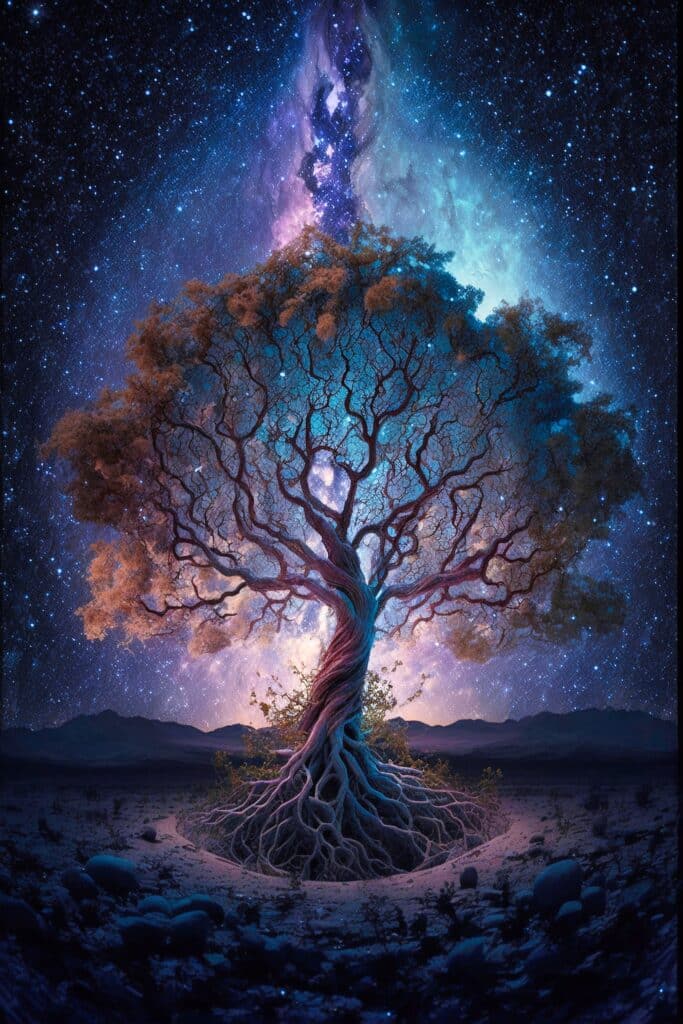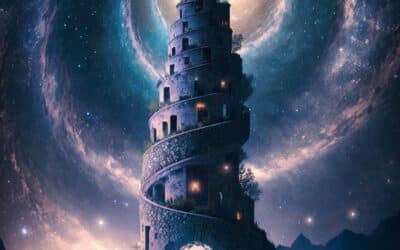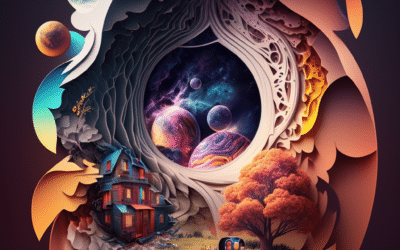Generative art, a creative expression using algorithms and procedures as the primary driver of the artistic process, is at the crossroads of art, design, and computation. As part of the broader digital art movement, generative art turns the traditional creative process on its head, shifting the role of the artist from a direct creator to a designer of systems. This article explores the fascinating realm of generative art, highlighting its unique aspects, the technology behind it, its impacts, and its future potential.
Understanding Generative Art
Generative art refers to art that’s been algorithmically generated or composed using a non-human system in an autonomous manner. The artist creates a process, typically written as a computer program, which then produces unique output. These processes can utilize randomness, data sets, or even machine learning techniques to generate intricate and surprising results that may not be achievable through manual means.
Historical Context and Emergence
The origins of generative art can be traced back to the mid-20th century, when artists began exploring the potential of computers and algorithms to create art. Pioneers like Vera Molnár and Harold Cohen developed some of the first computer-generated artworks, setting the groundwork for future generative artists.
As digital technology advanced and became more accessible, so too did the complexity and diversity of generative art. Today, artists use sophisticated software tools and coding languages like Processing, openFrameworks, and MaxMSP to design intricate generative systems.
Artistic Expression in Generative Art
Generative art encompasses a broad spectrum of aesthetics and forms, from digital images and animations to physical installations and sound compositions. What unites these disparate works is the common thread of algorithmic processes and procedural generation.
The artist’s role in generative art is less about direct control over the final outcome and more about crafting the systems, rules, and parameters that guide the creation process. This shift often leads to unexpected and serendipitous results, pushing the boundaries of artistic expression.
Generative Art and Technology
Generative art relies heavily on computational algorithms and programming languages. However, as technology advances, so do the possibilities for generative art. Machine learning, for instance, has emerged as a powerful tool for generative artists. By training neural networks on large datasets of images, generative artists can create new, original works in the style of the training data.
Moreover, generative art is not limited to visual media. It extends into music, literature, architecture, and even virtual reality, utilizing procedural generation to create unique, complex structures and experiences.
The Future of Generative Art
As we move further into the digital age, the potential for generative art continues to expand. Emerging technologies like blockchain and NFTs offer new ways for generative artists to distribute and monetize their work, opening up exciting opportunities.
With the rise of artificial intelligence and machine learning, generative art could become even more sophisticated and autonomous. There’s also potential for increased interactivity, as generative systems could respond to user input or real-time data, creating dynamic artworks that evolve over time.
Conclusion
Generative art represents a profound shift in our understanding of artistic creation, replacing the traditional artist’s brush with algorithms and procedures. By exploring the interplay between control and randomness, generative artists create works that are as intriguing as they are unique.
As we continue to innovate and advance digital technology, the landscape of generative art will undoubtedly evolve alongside it. Despite being rooted in code and computation, generative art holds a deeply human allure — the fascination with the unknown, the unexpected, and the beauty of complex systems. It is a testament to the boundless possibilities that arise when art and technology converge.
The Impact on the Art Market
The advent of generative art has started to disrupt traditional notions within the art market. The digital nature of the artworks challenges the market’s traditional focus on physicality and rarity. However, with the advent of blockchain technology and NFTs, digital art can now be ‘owned’ in a way that was not possible before, opening up new avenues for buying, selling, and collecting generative art.
Generative Art and Education
The principles behind generative art – algorithms, coding, and procedural generation – are inherently tied to STEM (Science, Technology, Engineering, and Mathematics) fields. Therefore, it has the potential to play a significant role in education, serving as an engaging tool to teach coding and computational thinking. As digital literacy becomes increasingly important, generative art could become a staple in progressive educational curriculums.
A Broader Cultural Impact
Generative art has the power to make us rethink our relationship with technology. In a time when concerns about technology’s dominance in our lives are prevalent, generative art offers a different narrative. It shows that technology can be used to provoke thought, evoke emotion, and create beauty. It reframes technology from a tool of consumption to a tool of creation.
Beyond its aesthetic value, generative art can also help us understand complex systems and patterns, whether they are in nature, society, or the digital world. By visualizing these systems, generative art can offer new perspectives on our interconnected world.
Final Thoughts
Generative art stands at the intersection of art, mathematics, and computer science. It represents a fascinating fusion of human creativity and computational power, pushing the boundaries of what is possible in art. Its emergence has been a powerful force in the art world, challenging traditional norms, inspiring new forms of creativity, and opening up novel discussions.
As technology continues to evolve and become ever more integrated into our lives, it’s likely that generative art will play a significant role in shaping our cultural landscape. Its ability to merge the abstract with the tangible, the random with the structured, and the human with the machine presents an infinite array of possibilities. In essence, generative art is a journey into the unknown, an exploration of the exciting space where art and technology collide.



